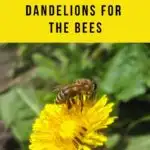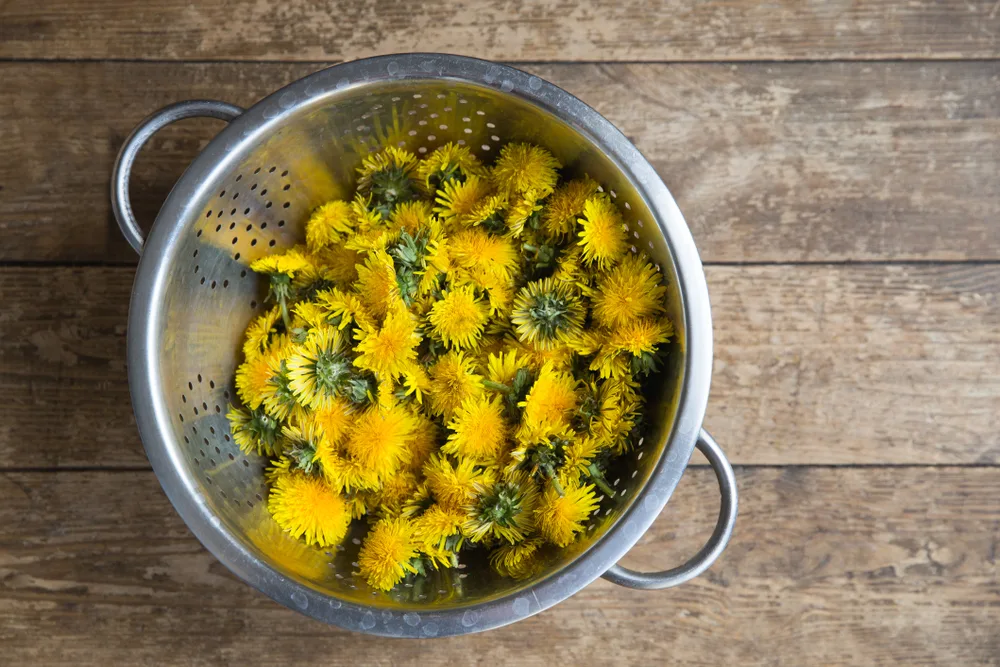
Pretty soon, the snow will melt, the grass will green, and just a few short weeks after that, great sweeping blurs of yellow flowers will cover fields and yards alike.
And while I’ll be busy planning a couple of batches of dandelion mead and some fresh stir-fried dandelion greens for my pizza, the battle cry will go out across all of social media.
“Save the dandelions for the honey bees! It’s their first food!”
I’m sure someone out there is already angry with me, picturing me sitting back, sipping my mead, having stolen all the dandelions. Meanwhile, after a long, hard winter, starving honey bees fly limply around me, searching endlessly for even one precious yellow flower to feed on.
So cruel, so heartless.
Except that’s not really the case.
“What? Tracey, are you telling me something I read on Facebook isn’t true?”
I know, shocking, isn’t it.
If you find that hard to believe, you may want to sit down – dandelion pollen isn’t all that good for bees to begin with. But they’ll still eat it if it’s the only pollen available, which it’s usually not.
It’s a bit like me waking up in the morning and saying, “Save the Fruit Loops for me; they’re my first food!”
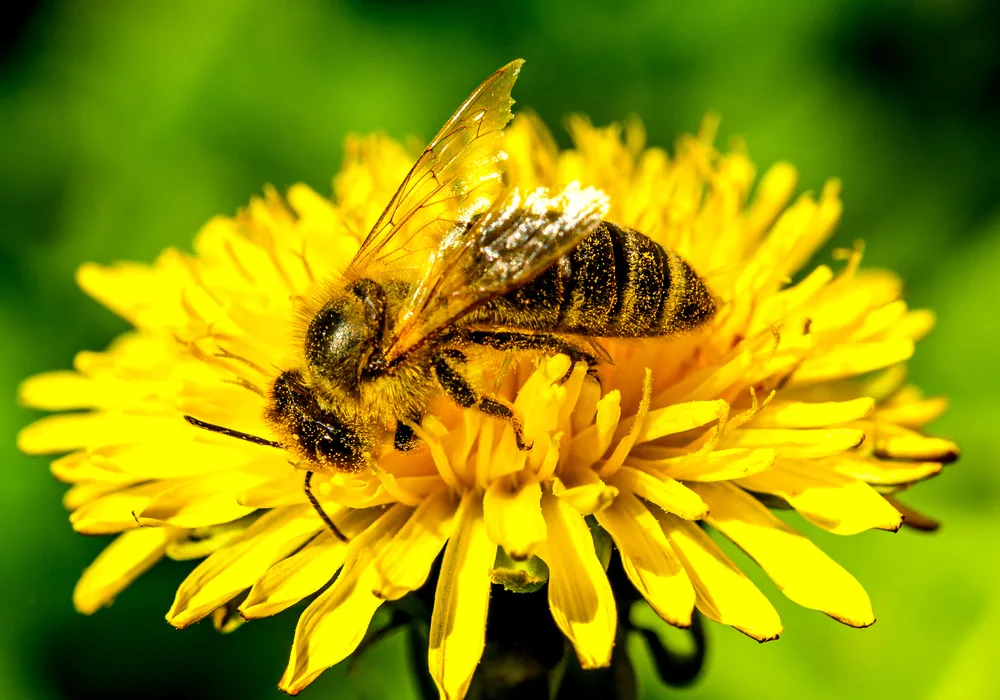
Dispelling the Bees and Dandelions Myth
Are you thoroughly confused yet?
Yeah, I was too the first time I had this explained to me. Let’s deconstruct this myth together, so we can all enjoy our dandelion jelly and dandelion bath bombs guilt-free, shall we?
First, Let’s Talk Bees
When we’re trying to ‘save the bees’, it’s important to talk about just what kind of bees we’re saving. Many folks don’t realize that honey bees aren’t native to the states – they’re an import.
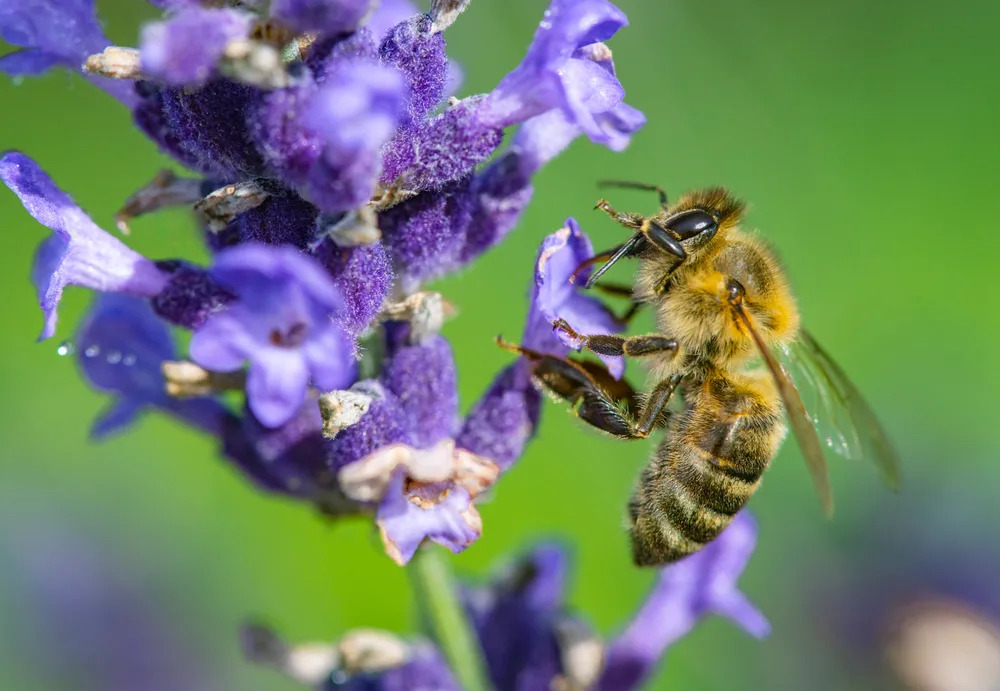
In fact, imported European honey bees play a huge role in our ability to buy fresh produce at the grocery store. Because of the lack of wild pollinators, these hard-working bees are shipped to the states and transported directly to the farms that grow much of our commercial produce.
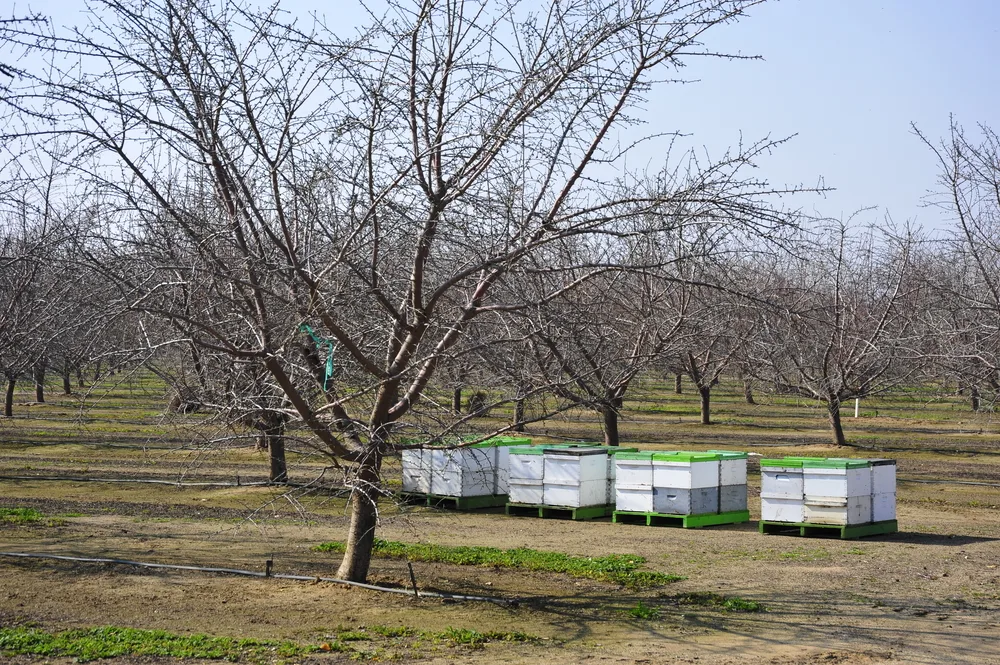
If it weren’t for these honey bees, you’d be hard-pressed to purchase an avocado, cantaloupe, or cucumber at the store.
But you’re unlikely to find these bees in your backyard. They stick pretty close to the hives on the farms where they work. You don’t need to save the dandelions for these little workaholics.
Of course, there are also honey bees kept by beekeeping hobbyists and small farms. Again though, these honey bees (also imported) tend to stick close to their hives and forage on the closest plants. This is why we can have varietal honey, like orange blossom or clover.
While honey bees are hard workers, they aren’t big travelers. Unless you live next door to a beekeeper, it’s unlikely that you’ll have any of these bees on your lawn, either.
So which bees are we supposed to be saving all these dandelions for anyway?
Wild pollinators.
Sounds like an Indie band in some college town, doesn’t it?
Live tonight, the Wild Pollinators! $5 cover at the door.
Okay, great, so what are the wild pollinators? Well, they’re exactly what they sound like – all the species of wild bees including the odd wild honey bee (sometimes those imports decide to go rogue). There are roughly 5,000 different species of bees that are native to North America. It’s these native bees that we need to protect and save.
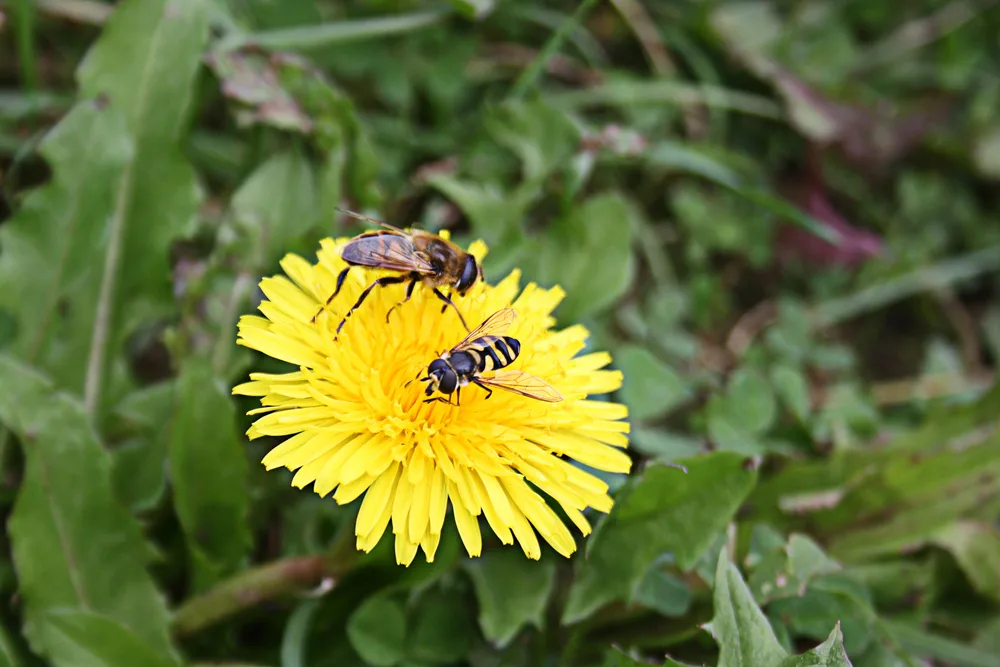
- Wild bees are the pollinators that help our gardens grow and keep wildflower species from disappearing by pollinating them year after year.
- These are the pollinators being endangered by the diseases that the imported honey bees are carrying.
- These are the pollinators we are killing off with all of our pesticides.
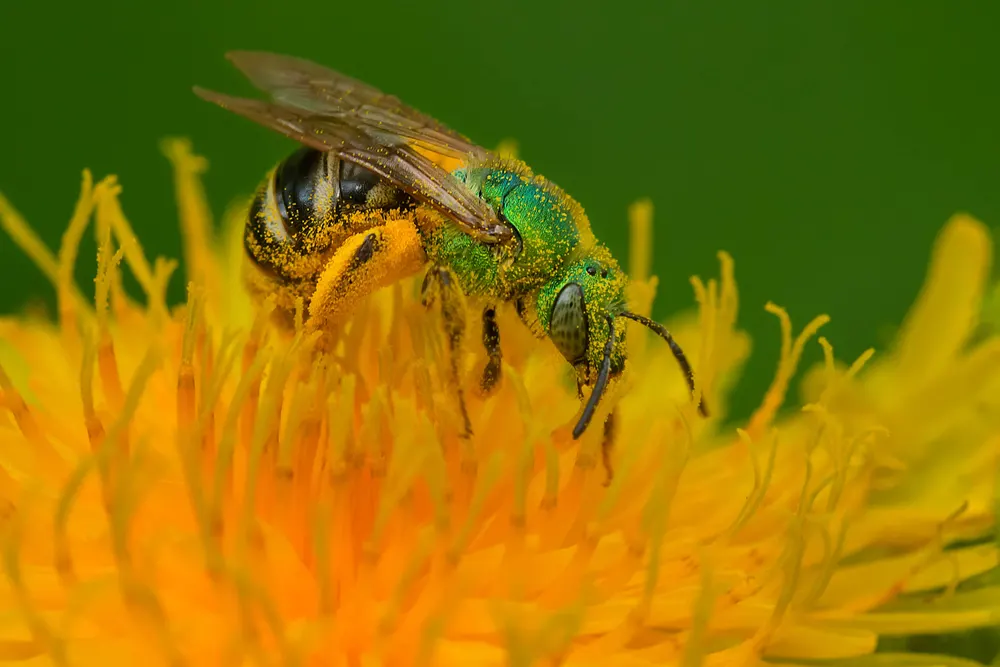
But even with all of that, we still don’t need to save the dandelions for them.
Dandelions – the Junk Food of the Pollen World
Before I decided to write all these beautiful articles for you lovely people, I used to work at Penn State University. I worked in a building with an eclectic collection of research laboratories that spanned all the life sciences. When you work alongside scientists day in and day out, you learn about what they do in those labs.
One of the things I learned was how important amino acids are for bees.
(Also, that grad students will do practically anything for free pizza.)
Amino acids are what the bee uses to make protein from the pollen. And for essential health to make new baby bees, they require many different amino acids. Unfortunately, dandelion pollen doesn’t contain four of these essential amino acids – arginine, isoleucine, leucine, and valine.
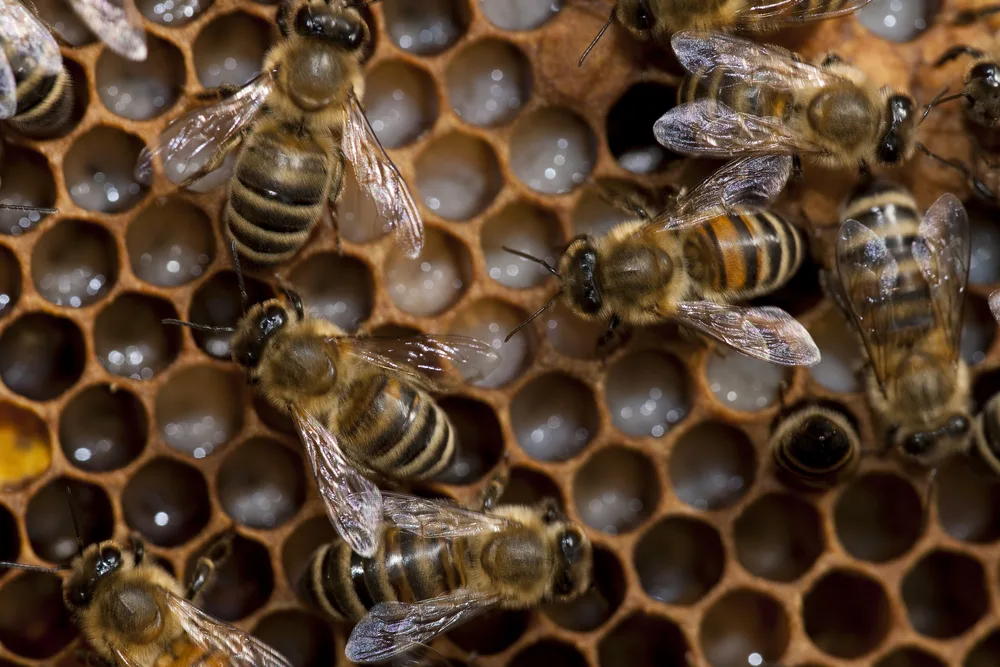
Without these four amino acids, the bees have a hard time reproducing, which is bad news when the pollinator population is declining. What’s more, if you’re worried about honey bees, in particular, one study fed caged honey bees a diet of strictly dandelion pollen, and the bees failed to produce at all.
Of course, most bees aren’t kept in a cage and fed a single-source diet.
Does this mean that dandelion pollen is bad for bees?
No, not really, but just like us, bees need a diverse diet. For them to be healthy, bees need to collect amino acids from the pollen of many different plants. Think of dandelions as a snack for bees; they’ll choose better food sources but will still forage from dandelions a bit too.
Kind of like me when there are Oreos in the house. Okay, that’s not even remotely true; I’ll choose Oreos over something healthy any day.
Okay, Tracey, but aren’t dandelions still the first thing to bloom and, therefore, the only food available for the bees?
Nope, not even close.
If You Want to Save Food for the Bees, Look Up
Take some time this spring to pay attention to what’s flowering as the weather warms. No, seriously, give it a try, and look beyond your front yard. You’ll be surprised at all the plants that bloom before dandelions.
Don’t look for your usual flowers, either; many pollen sources aren’t pretty flowers in your yard.
If you talk to anyone who grows fruit, and they’ll tell you that their fruit trees are humming with the sound of bees each spring.
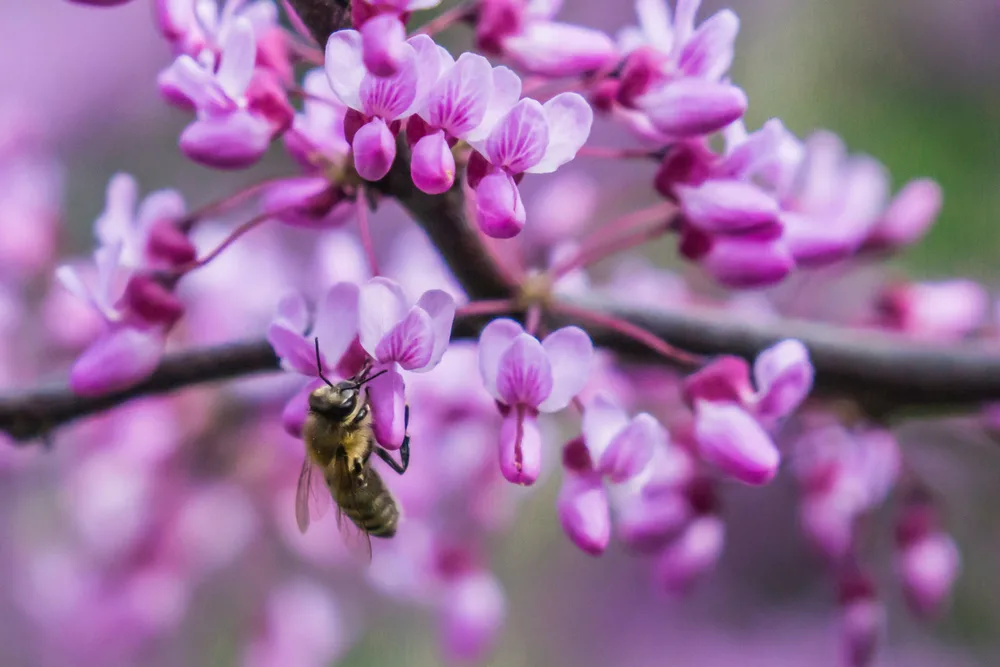
In fact, the actual first food for wild bees is often tree pollen, whether it’s from blossoming fruit trees, or red maples, redbuds (a personal favorite here in PA), and serviceberry (also great for attracting birds to your yard). Trees, especially flowering ones, are one of the first plants to bud out each spring.
Don’t believe me? Ask anyone who suffers from seasonal allergies.
And when it comes to plants on the ground, I’m more likely to be mindful of how much purple dead nettle I harvest rather than how many dandelions I pick. Many low-growing weeds that don’t pop up in your yard (but keep disappearing because of encroaching yards) are good food sources for bees.
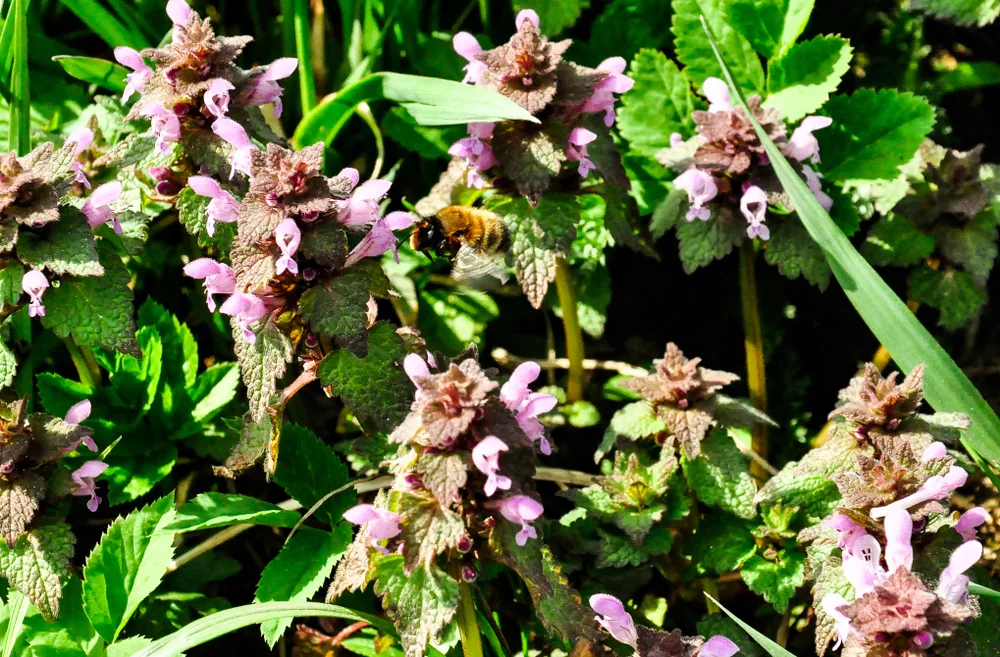
We Need to Save the Bees
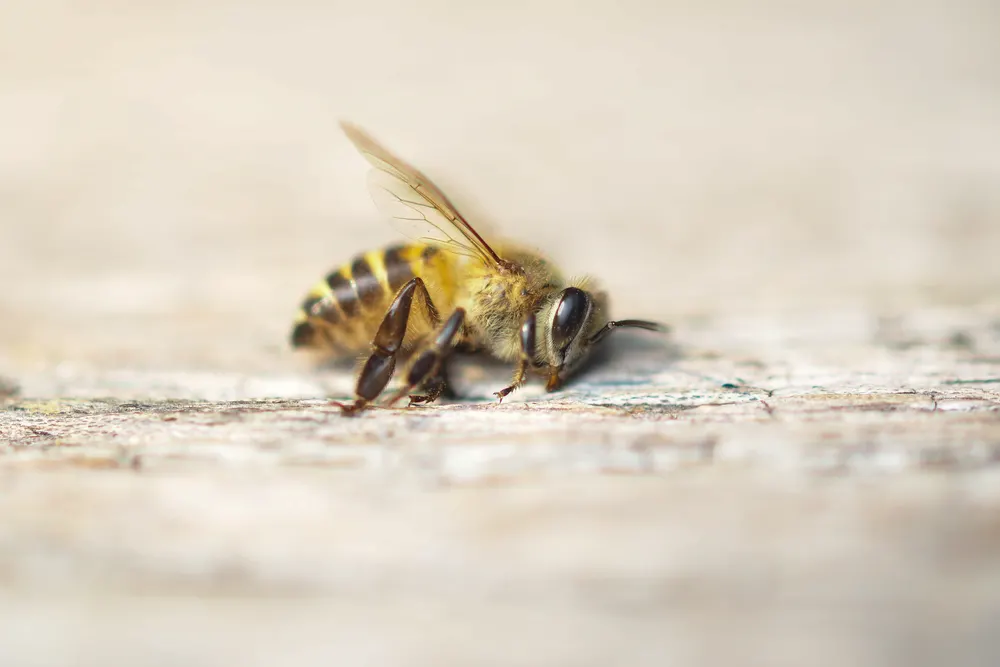
Don’t get me wrong, it’s incredibly important that we save our pollinators. But we need to make sure we’re putting our efforts in the right places.
At the end of the day, it’s about paying attention. Look around you in the spring. Perhaps you live somewhere that doesn’t have many trees, so dandelions are all you’ve got. Or maybe there was a late snow knocking many of the fruit blossoms off the trees.
Then yes, by all means, save the dandelions.
As foragers, it’s our responsibility to forage in a way that leaves as little impact on the land as possible.
Or you absolutely must have an emerald green lawn free of dandelions, great, go for it. But get on your hands and knees and pull them up by hand. And consider adding a flowering tree to your yard too.
Maybe try going wild – literally. Rewilding even a portion of your lawn is a much better way to help out wild bees than by saving the dandelions. Perhaps turn a portion of your lawn into a wildflower meadow.
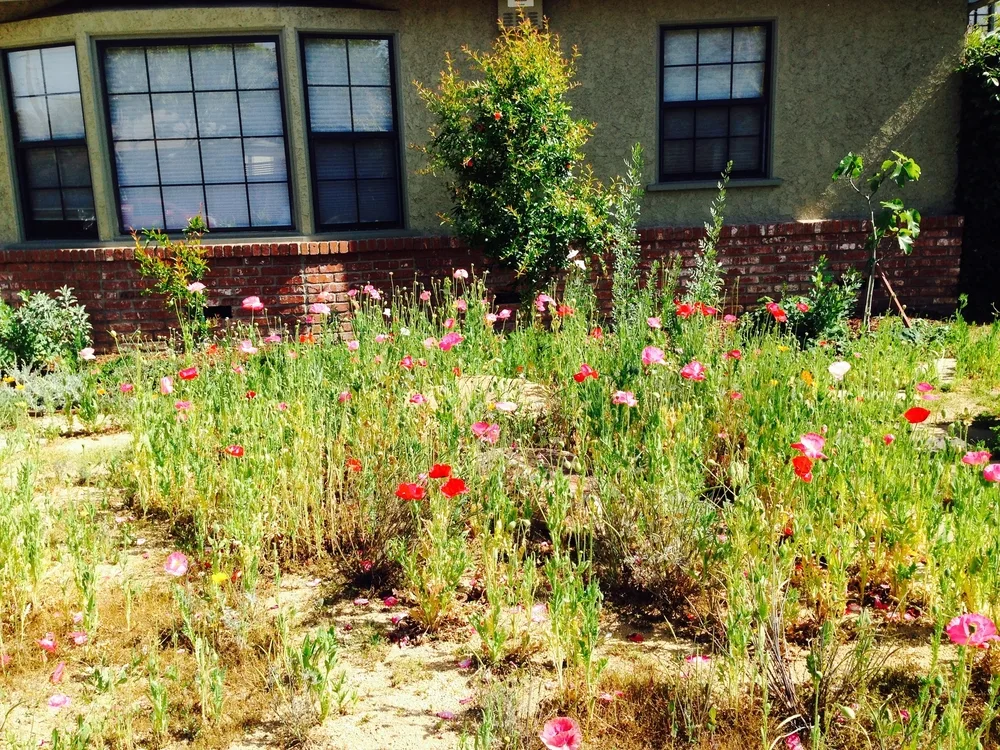
A recent study has shown that climate change does more to threaten wild bee populations than messing with their habitat.
As we wrap this up, let’s be clear – go ahead and forage dandelions.
Make some mead and pick those happy little yellow flowers until your fingers turn yellow. Be a responsible forager and only take what you need. Don’t swipe all the dandelions, leave lots to go to seed so more beautiful yellow flowers can pop up next year.
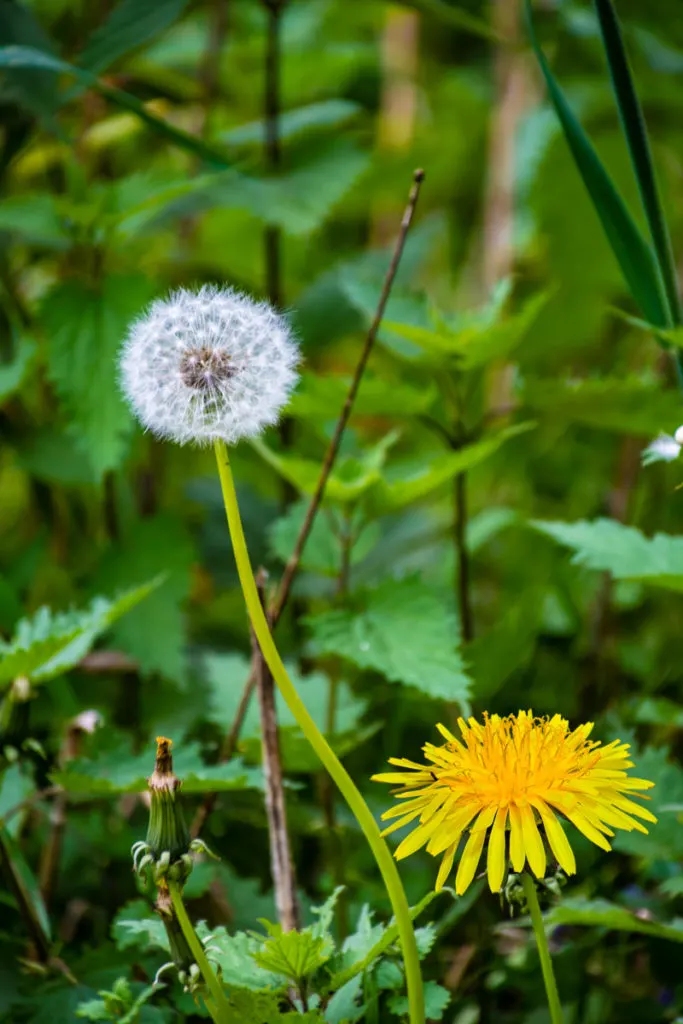
There are better ways to help pollinators, like making a bug hotel, or even scattering some of these wildflower seed bombs around your property or local community.
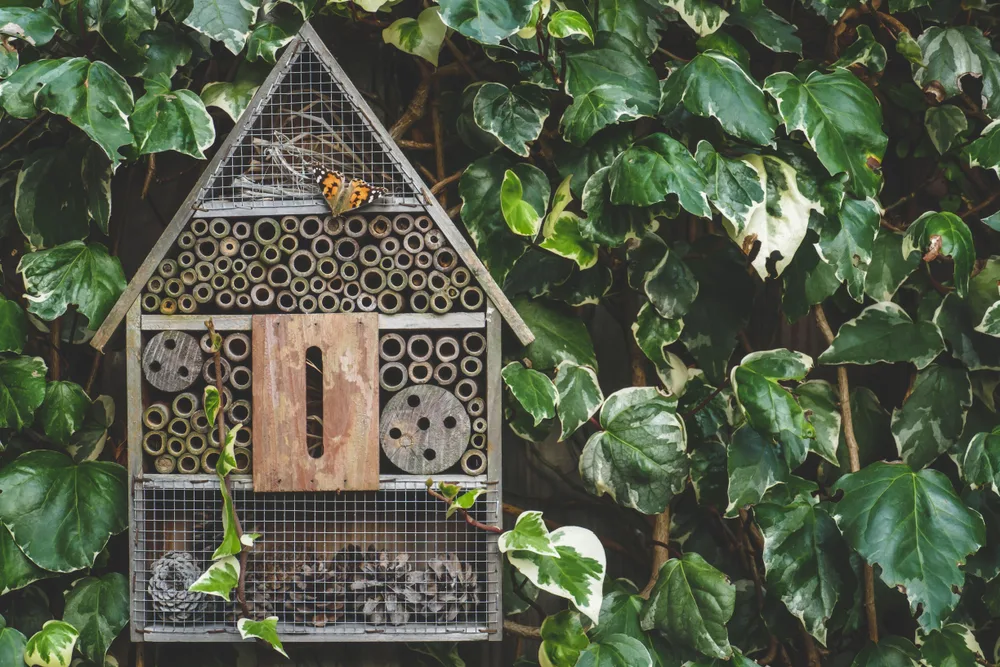
But if you’re genuinely hoping to save the bees, both the wild ones and the honey bees, maybe the better message to splash all over social media is to put away the pesticides and start paying attention to how we impact the climate, even if it’s just the climate of your backyard.
Pin This To Save For Later
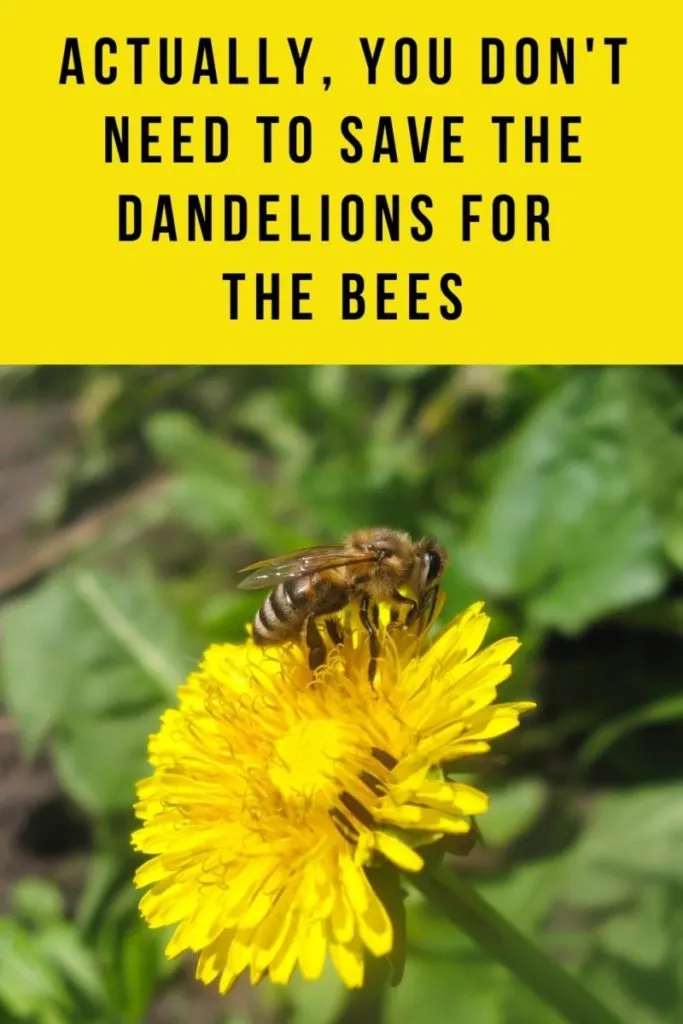

Get the famous Rural Sprout newsletter delivered to your inbox.
Including Sunday ramblings from our editor, Tracey, as well as “What’s Up Wednesday” our roundup of what’s in season and new article updates and alerts.


